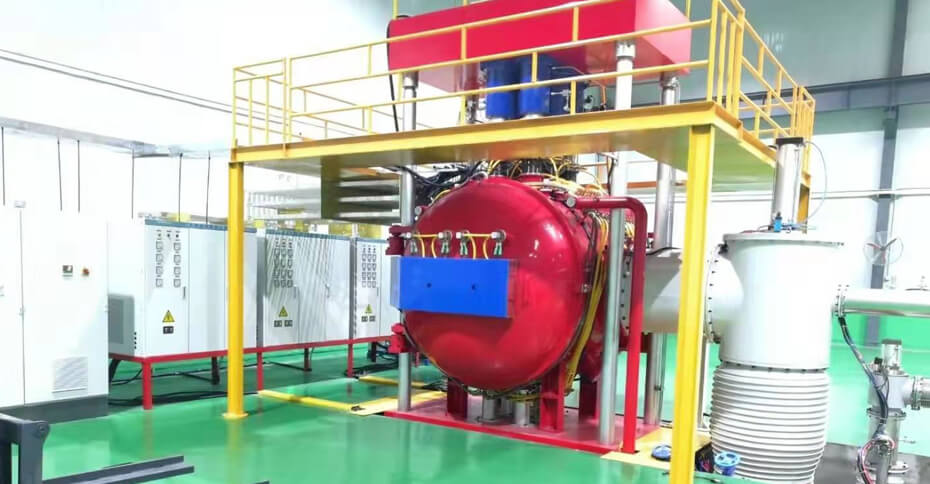All Services
What is Diffusion Bonding?
Diffusion bonding is a solid-state connection method. Under certain temperatures and pressure, the surface to be welded has a small plastic deformation to achieve a large area of close contact, and after a certain period of heat preservation, The metallurgical bonding of parts is realized by the mutual diffusion of atoms and interfacial migration between contact surfaces.
The Three Stages of Diffusion Bonding
Diffusion bonding can be divided into three stages:
The first stage is the initial plastic deformation stage. At high temperature and pressure, the micro protrusions of the rough surfaces are first contacted and plastic deformation occurs. The actual contact area is greatly increased, and with the breakage of the surface adhesion layer and oxide film, the interface is tightly contacted and a large number of metal bonds are formed. Provide conditions for atomic diffusion.
The second stage is the mutual diffusion and migration of interfacial atoms. At the connection temperature, the atom is in a high activation state, and a large number of vacancies, dislocations and lattice distortions formed by the deformation of the surface to be welded make the atomic diffusion coefficient greatly increased. In addition, this stage is accompanied by recrystallization to achieve stronger metallurgical bonding and shrinkage and disappearance of interfacial pores.
The third stage is the disappearance of the interface and hole. At this stage, the atoms continue to diffuse, and finally, the original interface and holes disappear completely, reaching a good metallurgical bonding.

Advantages of Diffusion bonding Technology
(1) Excellent joint performance. Diffusion bonding joint has high strength, good vacuum sealing and stable quality. For homogeneous materials, the microstructure and properties of welded joints are similar to those of base metal, and the physical and chemical properties of base metal do not change after bonding.
(2) Small bonding deformation. Diffusion connection is a solid phase connection technology. There is no metal melting and solidification in the bonding process, and the pressure applied is generally low, which can restrain the generation of macroscopic deformation and ensure the high precision size and geometry of the parts.
(3) Diffusion connections to materials difficult to weld by other means, such as homogeneous materials with low plasticity or high melting point, heterogeneous materials prone to intermetallic compounds, or metals and nonmetals, have great advantages.
(4) Large area connections can be achieved. For the large size section, the pressure is uniformly distributed on the whole interface during diffusion connection, and its good contact is realized, thus the effective connection is achieved.
(5) The bonding process is safe, clean and pollution-free, the whole bonding process has no harmful substances such as spatter and radiation, and the bonding process is easy to realize automatic control.
Diffusion bonding applications:
Based on the unique advantages of Diffusion bonding equipment and technology, Stoll has developed a series of solid-phase material increasing manufacturing products, which have been widely used in many important manufacturing fields, such as aviation, aerospace, nuclear energy, offshore oil and gas exploitation, petrochemical industry, solar thermal power, power electronics, information communication, injection mould and so on. Some of these product structures are integrated and efficient to upgrade the original products (such as micro-channel heat exchangers, reactors), and some become key manufacturing technologies in emerging industries such as floating nuclear power plants at sea and aero-engine.
Stoll Processing Power:
Stoll has its own intellectual property rights of vacuum diffusion bonding equipment for solid-phase material manufacturing. The design working temperature of the four-generation equipment is 1250~1500°C; Its structure is pressurized by a single shaft and single cylinder, To 4- axis, 4- cylinder pressure, The pressurized tonnage also increased from the initial 12 tons to 600 tons; The mean temperature zone covers 300×300×300mm3 ~ 600×600×600mm3. Not only to meet the needs of research, Moreover, but it can also meet the large-size structure development and batch bonding manufacturing of cold plate and microfluidic channel integrated high-pressure heat exchanger with 600×600 mm2. Currently, Stoll has upgraded the first set of vacuum Diffusion bonding equipment in large temperature area (800×800×1200 mm3), large tonnage (1200 t), multi-axis and multi-cylinder pressure, The equipment makes up for the blank of solid phase material increasing technology of large precision structural parts in China.
Products Recommended
Now, take your business to the next level! Click the Mail button to send us your requirements and Request for Quote.
* We Will Reply To You Within 24 hours. Tel: +86-19121320938, our working days are Mon. to Sat., Beijing Time: 9:00~18:00.






